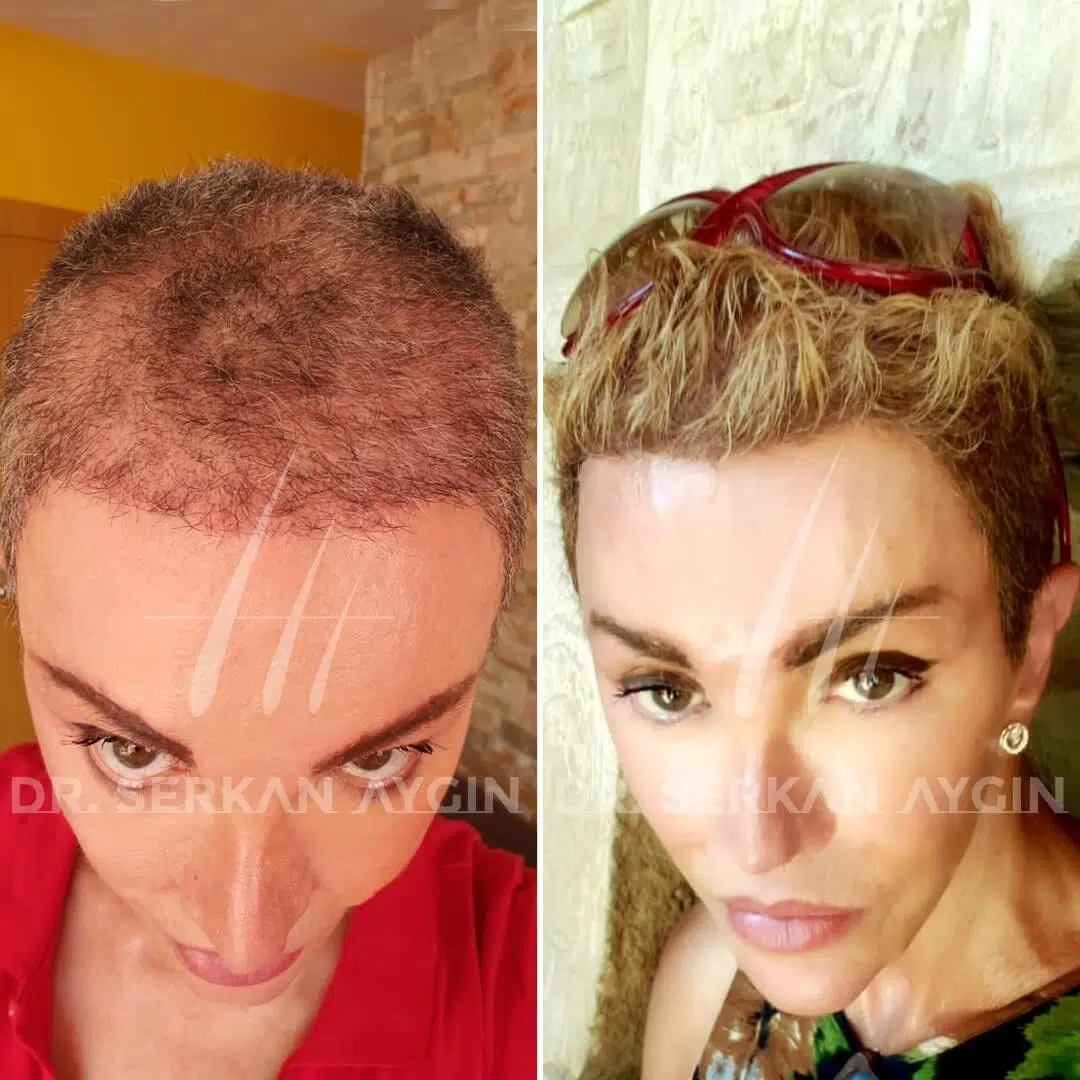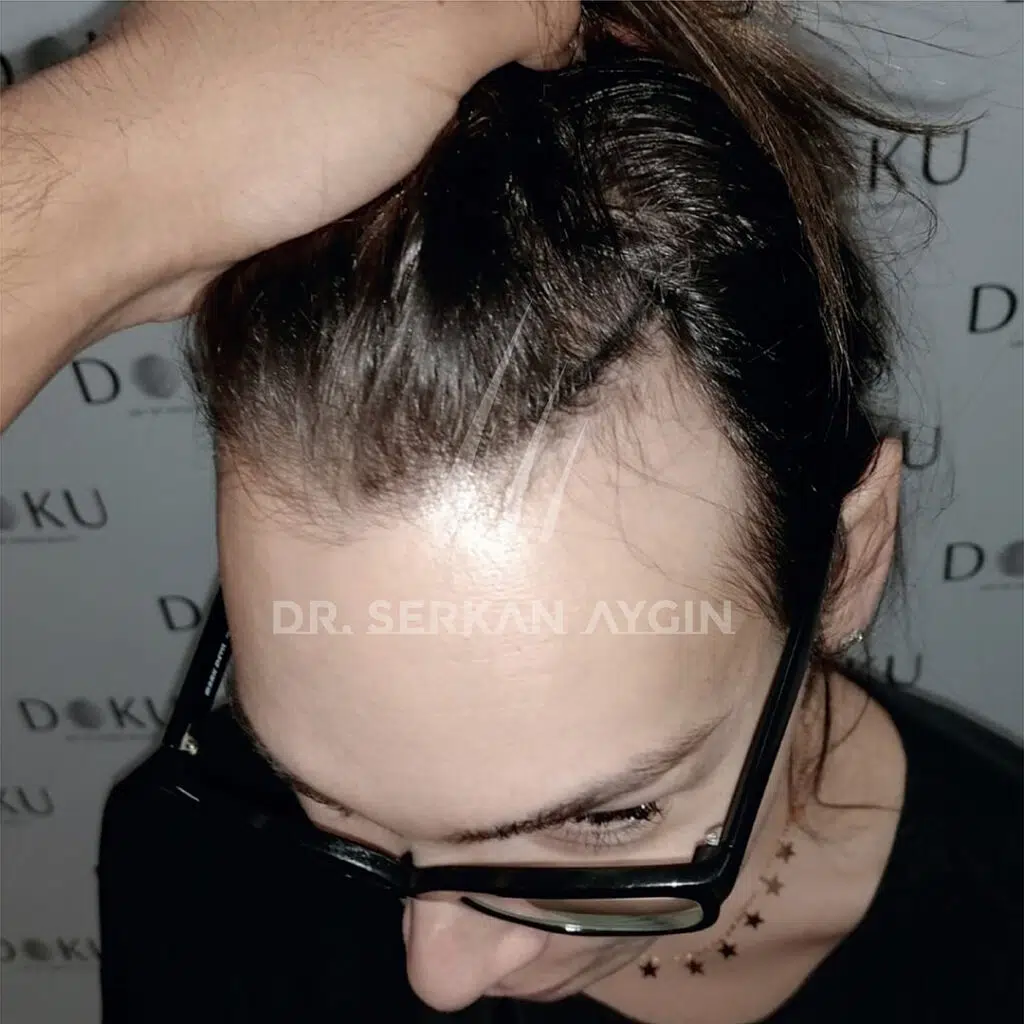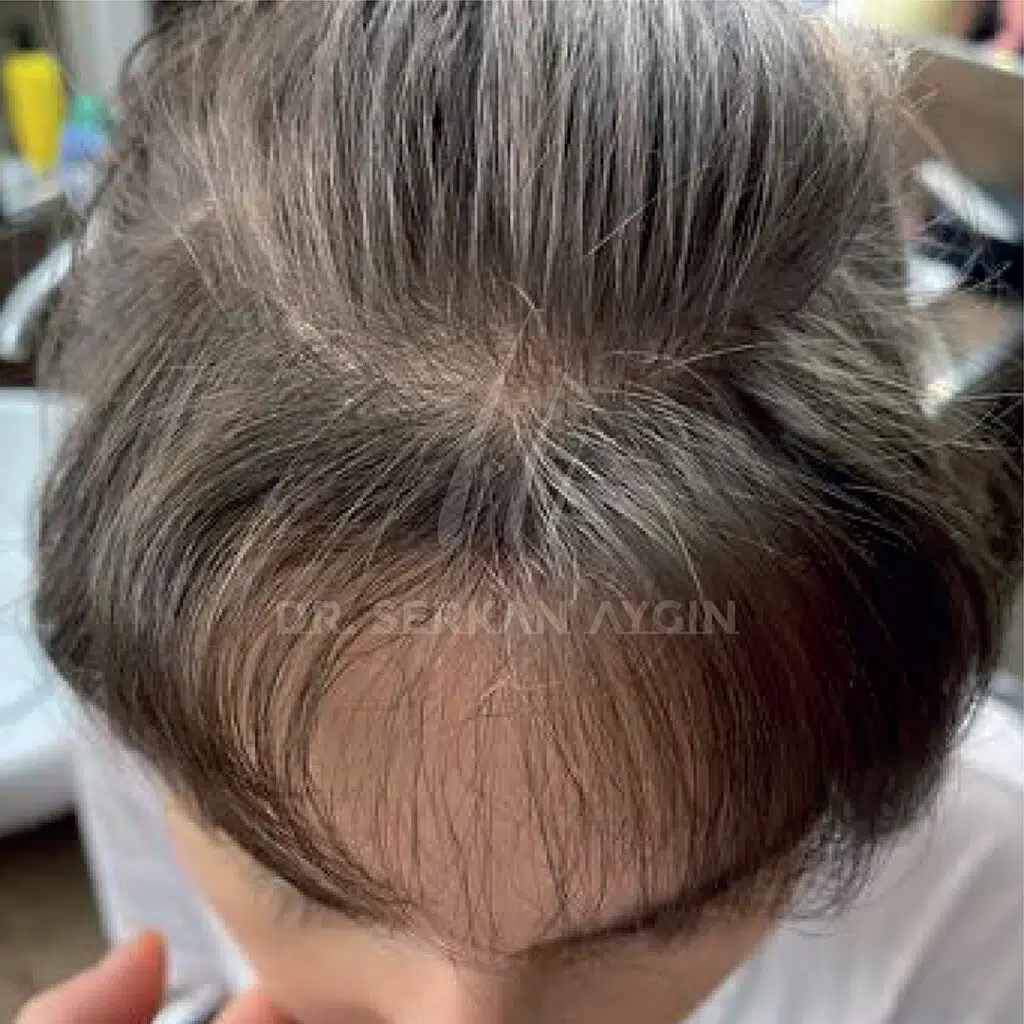A hair transplant for women is a safe, permanent treatment for women with alopecia and any type of permanent hair loss. More and more people increasingly opt for a hair transplant for women with alopecia to restore their symbol of beauty and boost confidence and self-esteem.
Dr. Serkan Aygin Clinic is the best place to get this treatment, with its eponymous experts counting 10,000+ hair transplant surgeries with a 98% success rate. Here is the crucial information about hair transplants for women to help you understand how they work and if you’re a suitable candidate.
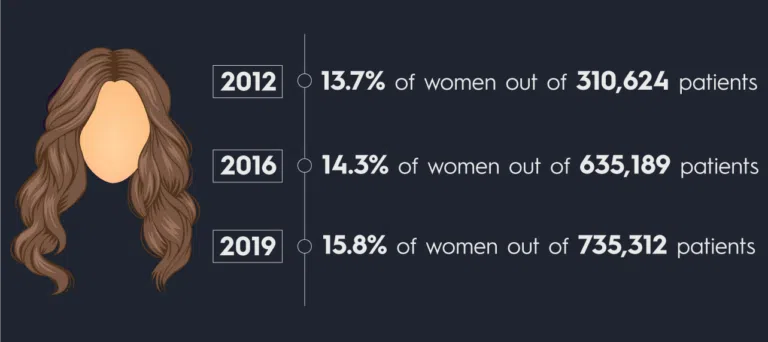
Women’s hair transplant requires a complete understanding of hair loss patterns, experience in no/partial shaving methods, and an artistic keen eye on natural feminine hairline design.
Here, we will talk about:
- FEMALE HAIR TRANSPLANT PROCEDURE
- WHY MOST WOMEN CAN NOT GET HAIR TRANSPLANT
- DIFFERENCE BETWEEN MEN AND WOMEN HAIR TRANSPLANT
- THE COST OF WOMEN’S HAIR TRANSPLANT
- ELIGIBILITY FACTORS FOR WOMEN HAIR TRANSPLANT
- BENEFITS AND DOWNSIDES OF FEMALE HAIR TRANSPLANT
- FEMALE HAIR TRANSPLANT IN TURKEY

Facts About Hair Loss and Hair Transplants for Women
Hair loss in women occurs more than you think. Here are some facts about hair transplants for women:
- Approximately 30% (⅓) of women experience hair loss in their 30s
- Roughly 40% of women face hair loss by age 50
- Hair thinning, shedding, and balding in women typically occurs at the top of the head
- A hair transplant for women with receding hairline is more and more requested
- In time, it may progress downward, affecting hairline and temples
- Women can get a successful hair transplant even after menopause
- The best candidates for female hair transplantation are women with androgenetic alopecia
- Women don’t need to shave their entire head for a hair transplant, only a portion of the back area
- The procedure requires only local anesthesia and lasts 2–6 hours
- The minimally invasive treatment leaves no visible scarring
- Female hair transplantation provides natural-looking, permanent results
- The final result is visible within a year following the hair transplant
Let’s see how hair restoration differs in men and women.
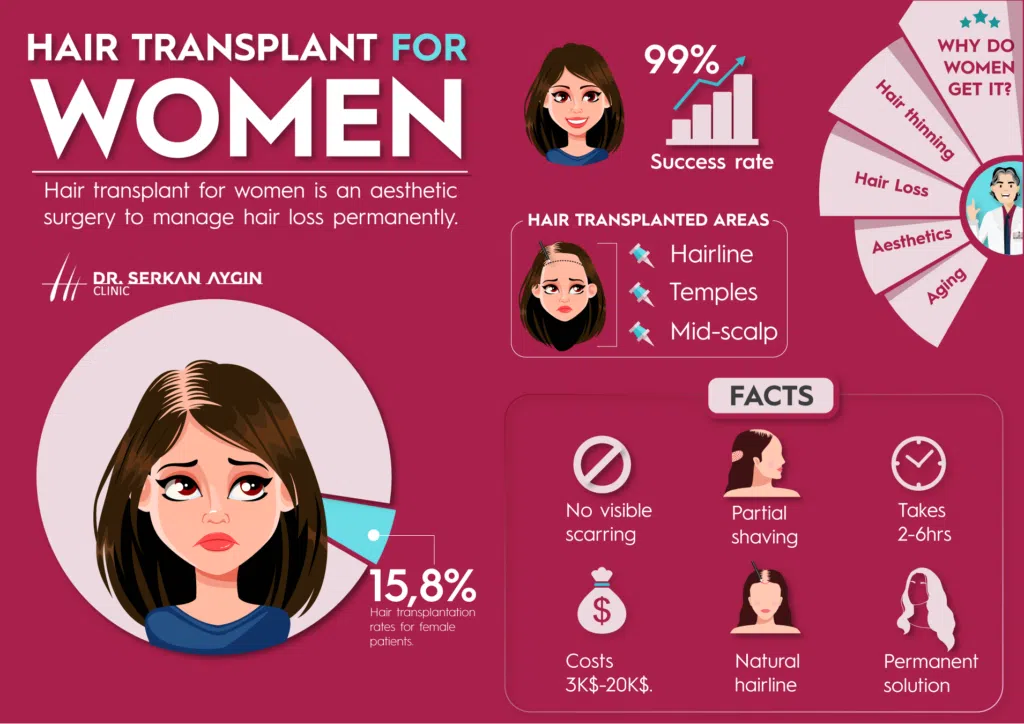
Male vs. Female Hair Transplant – What Is the Difference?
Hair loss occurs differently in male and female. Men typically experience a receding hairline, thinning at the top of the head (the crown or vertex region), or both. That’s male pattern hair loss (MPHL) or androgenetic alopecia in men.
On the other hand, women notice thinning hair at the part line or around the temples. We refer to it as female pattern hair loss (FPHL) or androgenetic alopecia in women. The difference from MPHL means women need fewer grafts when transplanting hair.
Unlike men, women rarely experience complete baldness. That makes female hair transplantation more manageable than its male counterpart.However, women can experience diffuse hair thinning all over the head. That makes finding a donor area with healthy hair challenging.
Another difference between a female and male hair transplant is that the former requires only partial shaving (at the back of the head). Men can undergo a no-shave or partially unshaven hair transplant, but only some are suitable candidates.
How Does a Hair Transplant for Women Work?
A hair transplant procedure for women involves DHI (Direct Hair Implantation), a cutting-edge method requiring no shaving or incisions. It includes the following stages:
- Anesthesia – The procedure starts with administering local anesthesia for a pain-free treatment.
- Graft harvesting – A specialist makes tiny (less than 1 mm) round punches around follicular units in the donor area using a micro-motor surgical tool. Upon loosening the connective tissue, they extract healthy donor hair with forceps.
- Direct hair implantation – The final stage involves placing the harvested hair follicles into a Choi pen’s hollow needle and directly inserting them into the recipient area. That state-of-the-art tool has forceps for seamless hair transplantation without damaging the surrounding tissue.
The innovative DHI technique requires high precision but ensures minimal scalp trauma, fast recovery, and higher graft survival rates.
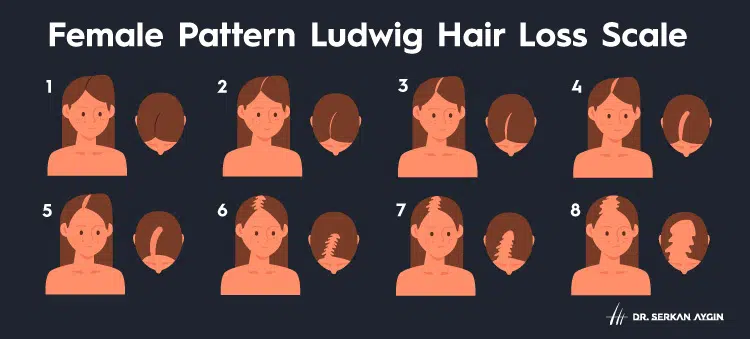
When Is One Suitable for a Female Hair Transplant?
A suitable age for a hair transplant is between 25 and 65, whether you’re a man or a woman. Undergoing the procedure before turning 25 could result in unsatisfactory results because your surgeon can’t accurately determine your donor area’s stability at that age.
Still, most experts advise women to wait until they’re 30 because hair thickening reaches its highest point by that age.
Unfortunately, this treatment for women isn’t suitable for those with:
- Alopecia areata – an autoimmune disease that may lead to alopecia totalis (complete hair loss);
- Telogen effluvium – diffuse hair shedding (primarily when the condition is acute);
- Trichotillomania – a compulsive hair-pulling disorder;
- Lichen planopilaris – an inflammatory skin condition causing clumps of hair to fall out.
If you’re in menopause, we recommend waiting because your body is undergoing significant hormonal changes. Post-menopausal women can enjoy permanent hair transplant results.
Female Hair Transplant Aftercare
Aftercare is critical for successful hair growth, so follow these tips:
Don’t wash your hair within the first 24 hours following the surgical treatment.
- Keep your head elevated while sleeping during the first week to reduce swelling.
- Don’t scratch the transplant area (it will be itchy).
- Apply the lotion your chosen surgical team has provided.
- Don’t wear tight hats, helmets, or swim caps.
- Don’t use hair styling products or dye your hair during the first several months after the surgery.
Your hair transplant surgeon will provide the aftercare instructions, so follow them to ensure graft survival and satisfying results.
Flawless Patient Care at Dr. Serkan Aygin Clinic
The award-winning Dr. Serkan Aygin Clinic is famous for excellent patient care, from the initial consultation to the final follow-up. It even handles your accommodation and transfer, ensuring a stress-free experience.
The clinic’s specialized, experienced team performs the hair transplant operation, but the world-famous Dr. Serkan Aygin accompanies every patient before and after the hair transplant. He’s always available for questions, concerns, advice, and aftercare.
Schedule your free consultation to see if you’re a suitable candidate and discuss your options.
REFERENCES
[1] International Society of Hair Restoration Surgery: 2020 Practice Census Results
[2] Lam, S. M. (2020). Hair Loss and Hair Restoration in Women. Facial Plastic Surgery Clinics of North America, 28(2), 205–223. doi:10.1016/j.fsc.2020.01.007
[3] https://www.gminsights.com/industry-analysis/hair-transplant-market
[4] Unger RH. Female hair restoration. Facial Plast Surg Clin North Am. 2013;21(3):407-417. doi:10.1016/j.fsc.2013.05.011
[5] Fabbrocini G, Cantelli M, Masarà A, Annunziata MC, Marasca C, Cacciapuoti S. Female pattern hair loss: A clinical, pathophysiologic, and therapeutic review. Int J Womens Dermatol. 2018;4(4):203-211. Published 2018 Jun 19. doi:10.1016/j.ijwd.2018.05.001
[6] Ülker Erkan, A. (2011). THE FORMATION OF FEMINIST IDENTITY: FEMINISM IN THE 1930’S TURKEY AND BRITAIN . Kastamonu Eğitim Dergisi , 19 (3) , 1013-1028 . Retrieved from https://dergipark.org.tr/en/pub/kefdergi/issue/49049/625746
[7] Ludwig E. Classification of the types of androgenetic alopecia (common baldness) occurring in the female sex. Br J Dermatol. 1977;97(3):247-254. doi:10.1111/j.1365-2133.1977.tb15179.x
[8] Savin RC. Kalamazoo, MI: The Upjohn Company; 1994. Evaluating androgenetic alopecia in male and female patients.
[9] Scribel M, Dutra H, Trüeb RM. Autologous Hair Transplantation in Frontal Fibrosing Alopecia. Int J Trichology. 2018 Jul-Aug;10(4):169-171. doi: 10.4103/ijt.ijt_37_18. PMID: 30386076; PMCID: PMC6192237.

